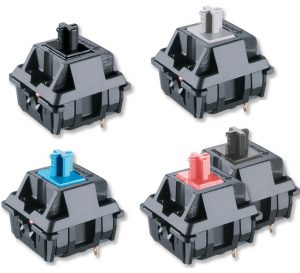Discover Exactly How a Membrane Switch Enhances Resilience and Capability in Tools
Understanding the Performance of Membrane Layer Switches for Interface Tools
The functionality of membrane switches stands for a considerable advancement in customer interface layout, integrating efficiency with visual adaptability. These switches operate with a multi-layered structure that translates customer communications into electric signals, permitting for both compact designs and durability against ecological aspects. As markets increasingly focus on customer experience, recognizing the subtleties of membrane layer switch modern technology ends up being essential. What effects do these innovations hold for future applications, and how might they redefine customer communications across various devices?
What Are Membrane Layer Switches?
Membrane layer buttons are ingenious user interface devices that help with customer interaction with electronic equipment. These functional components contain several layers, including a graphic overlay, spacer, and a printed circuit layer. The style enables for a seamless combination right into numerous digital tools, improving both the aesthetic and functional aspects of individual interfaces.
Membrane switches are typically employed in a wide variety of applications, from house devices to commercial equipment and medical gadgets. Their building typically features a thin account, making them an ideal selection for compact designs. The responsive responses supplied by these switches can be engineered to meet specific customer preferences, ensuring reliable communication in between the individual and the gadget.
Sturdiness is another significant benefit of membrane layer switches, as they are immune to dirt, moisture, and chemicals, which boosts their life expectancy popular atmospheres. In addition, these switches can be customized in terms of shape, dimension, and visuals style, enabling branding and user-specific functions. In general, membrane switches over represent a useful remedy for improving customer experience in digital devices, incorporating performance with aesthetic charm in an efficient way.
How Membrane Layer Changes Job
Operating on a simple concept, membrane switches over make use of a layered construction to register customer input successfully. Each switch contains multiple layers, including a published circuit layer, a spacer layer, and a top visuals layer, which are designed to function with each other effortlessly. When a customer presses the top layer, it presses the spacer layer, bringing the conductive components of the circuit layer into contact with each other.
This get in touch with creates a closed circuit, signifying the device to carry out a details function. The design permits for different configurations, including tactile feedback, which can boost the individual experience by offering a physical experience upon activation. The products used in membrane switches often consist of versatile substrates, such as polyester or polycarbonate, which ensure longevity and resilience against wear and tear.

Key Advantages of Membrane Layer Switches

Another substantial advantage is their compactness. Membrane layer switches are thin and light-weight, which enables manufacturers to conserve area in their devices without giving up performance. This function is especially valuable in applications where weight and quantity are vital factors to consider.
In addition, membrane layer buttons are immune to dust, wetness, and chemicals, enhancing their sturdiness. This resilience prolongs their life expectancy and reduces the requirement for frequent substitutes, causing useful site expense financial savings in time.
Furthermore, the responsive feedback provided by membrane switches can be maximized to boost individual interaction. They can consist of attributes such as raised buttons or audible clicks, enhancing use and user experience.
Applications Across Industries
Interface tools utilizing membrane layer switches prevail in a broad selection of markets, showcasing their versatility and functionality. Membrane Switch. In the clinical sector, membrane buttons are essential to tools such as diagnostic tools and person surveillance systems, where their durability and simplicity of cleansing are important for preserving hygiene requirements. In the automotive industry, these switches are used in dashboard controls and infotainment systems, offering a smooth and modern user interface for customers.
In addition, the consumer electronic devices field gain from membrane buttons in home appliances and handheld devices, where small layout and user-friendly interfaces boost customer experience. Industrial applications also utilize membrane layer switches over for control panels in machinery and automation systems, stressing their robustness and resistance to harsh settings.
In the aerospace and protection sectors, membrane switches are used in cockpit controls and devices, where integrity and efficiency under severe problems are extremely important. Additionally, the video gaming sector increasingly integrates membrane layer buttons in controllers and game machines, contributing to an interesting user experience. On the whole, the convenience of membrane switches over allows their prevalent use throughout many industries, emphasizing their significance in modern interface layout.
Future Trends in Membrane Layer Switch Innovation

Furthermore, using advanced materials, such as polycarbonate and polyester movies, is anticipated to climb, offering boosted sturdiness and resistance to environmental stress factors. These materials contribute to the overall long life of membrane switches, making them suitable for harsher industrial applications.
In addition, the incorporation of clever technology, including IoT connection, will enable membrane layer buttons to communicate with other tools and systems, promoting an extra interactive individual experience. This pattern straightens with the growing demand for clever devices throughout different fields, from healthcare to customer electronics.
Last but not least, personalization choices are expected to broaden, permitting producers to over here create bespoke options tailored to details user demands and choices. These growths will place membrane layer switches as crucial parts in the development of interface modern technology.
Verdict
In verdict, membrane switches over represent a crucial improvement in individual interface innovation, supplying a reliable and functional option for diverse digital applications. As developments in material science and touch sensing modern technologies continue, the capability and applicability of membrane switches are expected to broaden, strengthening their significance in contemporary electronic devices.